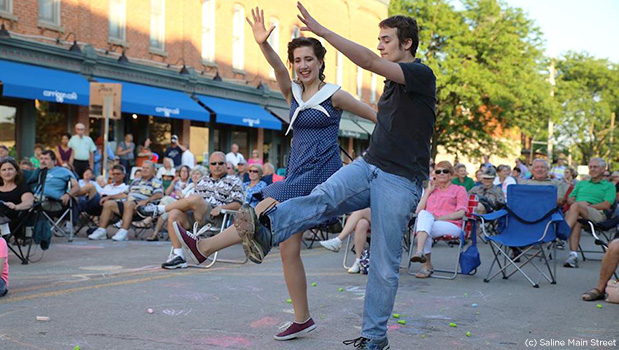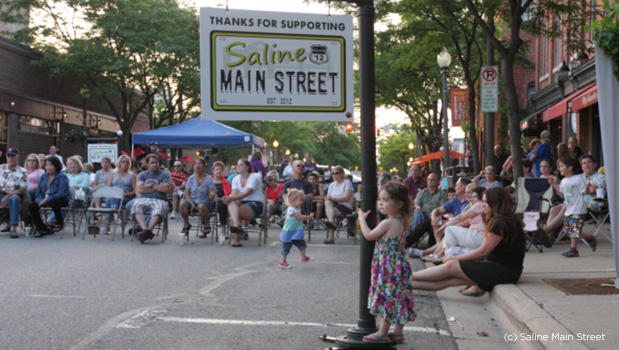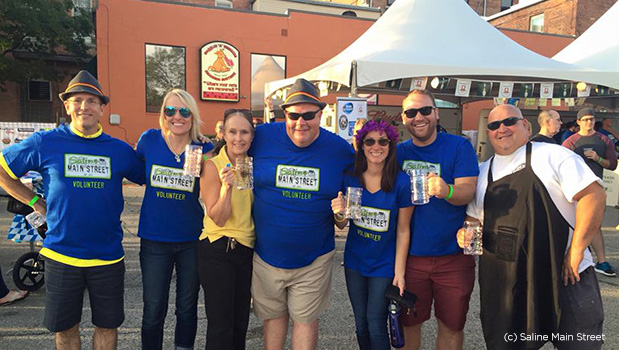Staff Spotlight: Exploring Arkansas with Lisa Mullins Thompson
Lisa shares reflections about eight Arkansas communities that recently received assessment visits

Marion, Iowa © Tasha Sams
We work in collaboration with thousands of local partners and grassroots leaders across the nation who share our commitment to advancing shared prosperity, creating resilient economies, and improving quality of life.

Emporia, Kansas © Emporia Main Street
Made up of small towns, mid-sized communities, and urban commercial districts, the thousands of organizations, individuals, volunteers, and local leaders that make up Main Street America™ represent the broad diversity that makes this country so unique.

Chicago, Illinois © Main Street America
Looking for strategies and tools to support you in your work? Delve into the Main Street Resource Center and explore a wide range of resources including our extensive Knowledge Hub, professional development opportunities, field service offerings, advocacy support, and more!

Waterloo, Iowa © Main Street Waterloo
Your one-stop-shop for all the latest stories, news, events, and opportunities – including grants and funding programs – across Main Street.

Kendall Whittier — Tulsa, Oklahoma © Kendall Whittier Main Street
Join us in our work to advance shared prosperity, create strong economies, and improve quality of life in downtowns and neighborhood commercial districts.

Back in October 2015, we introduced the three key components of the refreshed Main Street Approach: inputs, outputs and Community Transformation Strategies. These strategies provide a framework for how communities can leverage their local assets and engage communities in creating long-term transformation, resulting in a better quality of life for all.
But how does a Main Street organization select and use Transformation Strategies? Following a visit to Saline Main Street with Laura Krizov of Michigan Main Street, Matt Wagner and Norma Ramirez de Miess of the National Main Street Center developed a custom Strategic Transformation Strategy Plan for Saline. The full report includes three Transformation Strategies—Technology-Based Entrepreneurship, Residential Diversification and Family-Friendly. Here, we've included the first two, Technology-Based Entrepreneurship and Residential Diversification, as examples. For more information on Transformation Strategies, or to schedule a visit with our Field Services team, see our Main Street Field Services webpage.
The “Main Street Refresh” initiative aims to rethink the traditional Main Street model so the program is more responsive to economic context and its outcomes are directly measurable. Downtown Saline, Michigan’s commercial district is participating as a pilot and partner in testing and refining the new Main Street model and it’s alignment with Redevelopment Ready Communities (RRC) within the Michigan Economic Development Corporation (MEDC), prior to a formal statewide roll-out.
At the core of the Main Street Refresh are economically-grounded “Transformation Strategies.” These Strategies will serve as the foundation for the revitalization program’s work. The majority of activities with the organization’s annual workplan should then be guided by the Strategies and aligned around an agreed direction and outcome.
As part of the pilot, and as an aid to making the new format easier to adopt, the National Main Street Center has developed nearly 20 “off-the-shelf” strategies that can be employed in a range of conditions seen across a variety of communities. These are, essentially, ready-made Transformation Strategies. They are a place to begin and can be customized along the way. We have called this initial set “Catalyst Strategies.” The Catalyst Strategies are still in development, but our goal is that communities will be able to identify the strategies that are the best fit by using information they already have in hand or that can be easily obtained. We want to help communities get going, and not get bogged down in deep-dive market analysis research, at least at the outset.
For Saline, we familiarized ourselves with the neighborhood by reading background materials, making a two-day site visit and holding several phone calls. We then looked at a few key data sets (demographics, buying power, sales leakage, and business inventory) and, based on what we learned, proposed four possible Transformation Strategies. We also sought to understand the community’s experience with development and their readiness to deal with real estate investment as positioned through the Michigan RRC process. We presented the draft strategies at a community meeting to assess community reaction and garner feedback. Here are two, in no particular order: Technology-Based Entrepreneurship and Residential Diversification.
Based on community feedback and survey input, coupled with market data and current business mix reviews, we recommended the following Transformation Strategies for Saline.
The following transformation strategy is reflective of the unique geographic characteristics of downtown Saline, which is located within 20 minutes of Ann Arbor, Michigan—home of the University of Michigan. U of M is one of the top five federally funded research universities in the U.S. As a result, the Ann Arbor metroplex—including Saline—is part of a very extensive technology-based entrepreneurship ecosystem, featuring technical assistance providers, capital resource providers, access to talent (social capital), etc.
Over the last couple years, several more technology based companies have established offices locations in or around downtown Saline, resulting in the creation of well over 50 new jobs. Tech-based workers typically are higher paid, well-educated and generally are attracted to historic downtown locations that provide creative spaces for their work. They furthermore can be a source of potential residents seeking a more walkable and close-in live/work situation.
Why Saline?
Sample Work Plan Activities:
Design:
Promotion:
Organization:
Economic Vitality:

People who live in a commercial district are likely to need a variety of convenience items, from groceries to carry-out meals, and small hardware items to greeting cards. They also need easy access to personal and professional services, such as hair care, daycare, and medical services. People who live in and near the district are more likely to shop in the evenings and on weekends, which means an organization also needs to think about store hours.
The Residential Diversification Transformation Strategy helps your revitalization program capitalize on this all important “captive” customer group – and helps you meet more of their needs, making the district an even more appealing place for people to live and work.
To maximize this strategy’s success, you will need to learn a bit about the characteristics and work and shopping habits of the district’s residents. Marketing activities will then need to be geared towards their needs and interests and scheduled during times that work best for them. And, the range of products and services that are available in the district should be expanded, either by adding new product lines to existing businesses or by developing new businesses (or both).
Why Saline?
Sample Work Plan Activities:
Design:
Organization:
Promotion:
Economic Vitality:

Over the next year or two, after your Catalyst Strategy has begun taking root, you should plan to conduct additional research that can help you refine the strategy and adapt it more precisely to your district’s particular circumstances. You may tackle some aspects of the market research on your own, or you may choose to engage professional assistance. Whichever route you choose, this additional research should help you answer questions like these:
As we wrap up the Main Street Refresh pilot program in Saline—and in our other pilot communities across the county—we’ll be sharing much more about how to implement Transformation Strategies in your own community. Stay tuned for new resources and trainings from the Center in the coming year.
To schedule a visit with our Field Services team, go to our Main Street Field Services webpage.